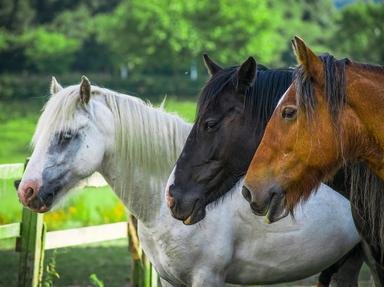Quiz Answer Key and Fun Facts
1. A wild bay is a variation of the bay. What's significant about it?
2. A horse cannot be brindle.
3. Many colors and patterns are accompanied by which of these?
4. What color has a dark brown coat, with lighter brown areas (such as around the muzzle)?
5. Which of these breeds is well known for coming in the color of silver dapple?
6. Which of these occurs because of the dun gene?
7. Which of these does the Norwegian Fjord always exhibit?
8. Where does cobwebbing occur?
9. The bloodmark can occur in horses of any color.
10. A chestnut is an unusual color in which breed?
11. Can a horse be both spotted (Appaloosa) and pinto?
12. Countershading can occur on almost every horse color.
13. Which of these was thought to be a result of rain-rot or a blood disorder?
14. If a foal has a dorsal stripe, it is automatically a dun.
15. There is more than one variation of dappling.
Source: Author
Morrigan
This quiz was reviewed by FunTrivia editor
crisw before going online.
Any errors found in FunTrivia content are routinely corrected through our feedback system.

